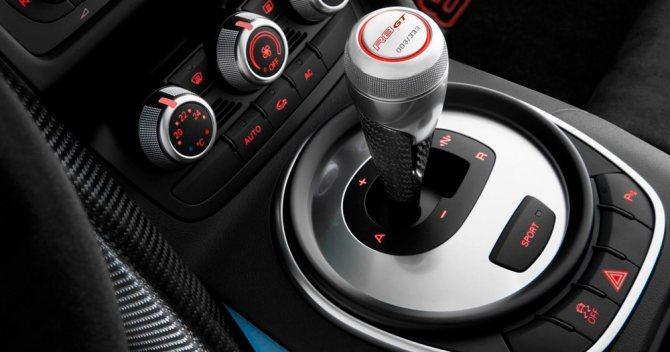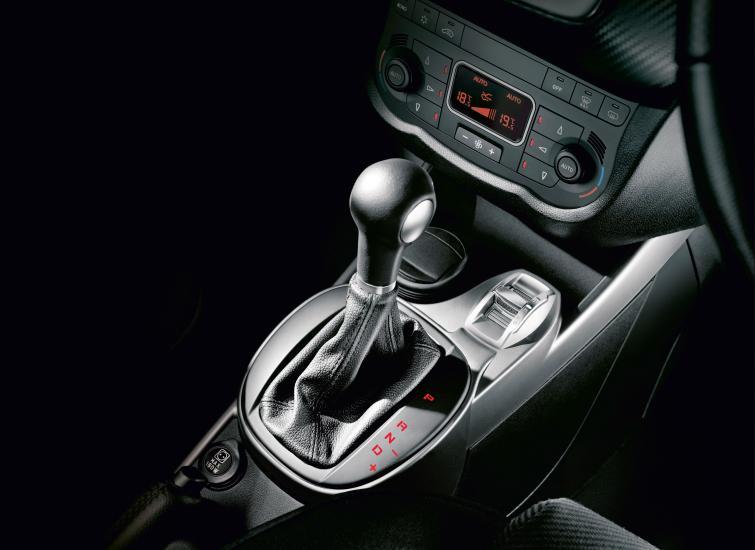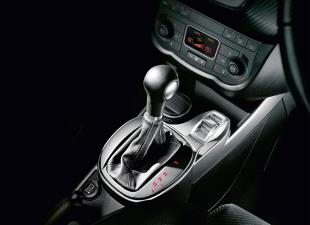
Compare automatic transmissions: sequential, dual clutch, CVT
 Automatic transmissions are gaining popularity among car owners. What are the main types of such transmissions and what are their advantages and disadvantages?
Automatic transmissions are gaining popularity among car owners. What are the main types of such transmissions and what are their advantages and disadvantages?

The USA is considered the birthplace of the automatic transmission. Back in 1904, the Boston company offered a two-speed automatic. The operation of this mechanism was, admittedly, very unreliable, but the idea found fertile ground and various types of designs with automatic gear shifting began to appear in the United States.
However, the first automatic transmission, similar in design and operation to modern transmissions, appeared only before the Second World War. It was a Hydra-Matic transmission developed by General Motors.
ADVERTISING
Hydraulic transmission
Among automatic transmissions, the most common (so far) are hydraulic transmissions. This is a complex mechanism that most often consists of a torque converter assembly or torque converter with multiple planetary gears.
The gears in planetary gears are connected or locked by appropriate friction clutches and multi-disc (multi-disc) or band brakes. In this case, an obligatory element of the hydraulic transmission is oil, which is completely poured into the gearbox.
Gear shifting is carried out by blocking various sets of sun gears interacting with freewheels, disc clutches (usually multi-disc), band brakes and other friction elements driven by hydraulic drives.
See also: ESP stabilization system - check how it works (VIDEO)
Design developments of hydraulic transmissions are hydroelectric transmissions (with, for example, the function of an additional gear ratio, the so-called kickdown) and electronically controlled transmissions. In this case, the gearbox can have several operating modes, for example, sport or comfort.
Also increased the number of gear ratios. The first hydraulic machines had three gear ratios. Currently, five or six gears are standard, but there are already designs that have nine.
A special type of automatic transmission is the sequential transmission (also known as semi-automatic transmission). In this type of mechanism, gears can be shifted using a lever that moves only forward or backward and shifts up or down one gear, or using paddles located on the steering wheel.
This solution is possible due to the use of an electronic microprocessor that controls the operation of the gearbox. Sequential gearboxes are commonly used in Formula 1 cars, and they are found in production cars, including Audi, BMW, Ferrari.
According to the expert
Vitold Rogovsky, ProfiAuto network:
– The advantage of hydraulic automatic transmissions is, above all, driving comfort, i.e. no need to manually shift gears. In addition, this type of transmission protects the engine from overload, of course, provided that the transmission is used correctly. The gearbox adjusts to the engine speed and selects the appropriate gear. However, the main drawback of its mechanism is its high fuel consumption. Automatic transmissions are large and heavy, so they are primarily suited to large powerful engines, which they work very well with. A certain disadvantage of these transmissions is also the fact that a used copy can be found on the secondary market.
Continuously Variable Gearboxes
A continuously variable transmission is a kind of automatic transmission, but with a rather specific device. There are two solutions - the traditional planetary gearbox and the now more common CVT (Continuously Variable Transmission) gearbox.
In the first case, the planetary gear is responsible for gear shifting. The design is reminiscent of the solar system in miniature. To select gears, it uses a set of gears, the largest of which has internal meshing (the so-called ring gear). On the other hand, there is a central (so-called sun) wheel inside, connected to the main shaft of the gearbox, and other gears (i.e. satellites) around it. Gears are switched by blocking and engaging individual elements of the planetary gear.
See also: Start-stop systems. Can you really save?
CVT, on the other hand, is a CVT with continuously variable transmission. It has two sets of bevel wheels that are connected to each other by a V-belt or a multi-disc chain. Depending on the engine speed, the cones approach each other, i.e. the diameter on which the belt runs is adjustable. This changes the gear ratio.
According to the expert
Vitold Rogovsky, ProfiAuto network:
– CVTs, due to their relatively small dimensions and low weight, are used in compact and city cars with smaller engines. The advantage of these transmissions is that they are maintenance free. Even oil changes are not recommended and they can withstand the same mileage as the engine. In addition, the moment of gear shifting is almost imperceptible. They are not as expensive as hydraulic boxes and don't add much to the price of the car. On the other hand, the biggest drawback is the significant delay in the reaction to pressing the gas pedal, i.e. power loss. It is also associated with increased fuel consumption. CVT transmissions are not suitable for turbo engines.
For two clutches
The dual clutch transmission has been making a career out of it for several years now. Such a gearbox first appeared on the market at the beginning of this century in Volkswagen cars, although it had previously been found in rally cars and Porsche racing models. This is a DSG (Direct Shift Gearbox) gearbox. Currently, many manufacturers already have such boxes, incl. in Volkswagen Group vehicles as well as in BMW or Mercedes AMG or Renault (e.g. Megane and Scenic).
The dual clutch transmission is a combination of manual and automatic transmission. The gearbox can operate in both fully automatic mode and with a manual gearshift function.
The most important design feature of this transmission is two clutches, i.e. clutch discs, which can be dry (weaker engines) or wet, running in an oil bath (more powerful engines). One clutch is responsible for odd gears and reverse gear, the other clutch is responsible for even gears. For this reason, we can talk about two parallel gearboxes enclosed in a common housing.
See also: Variable valve timing. What does it give and is it profitable
In addition to the two clutches, there are also two clutch shafts and two main shafts. Thanks to this design, the next higher gear is still ready for immediate engagement. For example, the car is running in third gear, and fourth is already selected but not yet active. When the ideal shift torque is reached, the odd clutch for third gear opens and the even clutch closes for fourth gear, so the drive axle wheels continue to receive torque from the engine. The switching process takes about four hundredths of a second, which is less than the blink of an eyelid.
Almost all dual clutch transmissions are equipped with additional operating modes such as "Sport".
According to the expert
Vitold Rogovsky, ProfiAuto network:
– No torque interruption in dual clutch transmission. Thanks to this, the car has a very good acceleration. In addition, the engine operates in the optimum torque range. In addition, there is another advantage - fuel consumption is in many cases lower than in the case of a manual transmission. Finally, dual clutch gearboxes are very durable. If the user follows the oil change every 60 thousand km, they practically do not break. However, in the secondary market there are cars in which the meter has turned up and in this case it is difficult to maintain the correct service life of such a transmission. One way or another, you may also come across cars in which these checks have not been carried out and the gearbox is simply worn out. Damage to the dual-mass flywheel also poses a danger to these transmissions, because then unwanted vibrations are transmitted to the gearbox mechanism. The disadvantage of dual clutch transmissions is also their high price.
Wojciech Frölichowski
